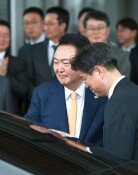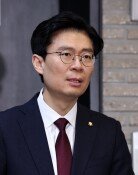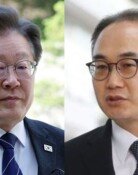U.S. guardrails for semiconductors make regulation tighter
U.S. guardrails for semiconductors make regulation tighter
Posted March. 23, 2023 07:49,
Updated March. 23, 2023 07:49
The U.S. government announced the details of “Guardrails” with the condition that businesses can receive government subsidies if they build semiconductor facilities on U.S. territory. The gist is to limit recipients of the U.S. government’s subsidies to increasing factories in China by up to five percent for the following decade. As the guardrails do not require a complete ban, South Korean semiconductors may avoid the worst-case scenario where they would halt operations or withdraw from China. However, tension is still growing as Washington expects to publish a new set of regulations on semiconductor exports next month to apply greater pressure on Beijing.
A notice of proposed rule-making for the guardrails issued on Tuesday by the U.S. Commerce Department stipulates that businesses if they receive grants as per the CHIPS Act, can expand the production capacity for cutting-edge semiconductors in China by up to five percent. The limit percentage on expansion for general-purpose semiconductors is up to 10 percent. Samsung Electronics and SK hynix have the five percent limit applied to their local semiconductor factories in China. The department referred to a facility’s production capacity for wafers but did not put a limit on technologies per se. Thus, it is interpreted that partial equipment expansions or technological upgrades can occur, lessening South Korean companies’ burdens.
However, it is still a brutal fact that South Korean semiconductor manufacturers will face barriers to investments in the Chinese market for the next 10 years. If they observe the five percent limit rule, China-based factories may stay in operation as they have been. However, they will find it hard to maintain their footing as a production hub from a mid-and long-term perspective. Samsung produces 40 percent of NAND flash memory chips in Xian, while SK hynix manufactures half its D-RAM outputs in Wuxi. In other words, any limitations on their Chinese production capacity will lower their competitive edge in terms of prices.
Additionally, some tricky conditions are still attached to the U.S. grant program by which businesses can receive financial support only when they share excess earnings, prioritize military semiconductor supplies, and reveal how production lines work. Indeed, these toxic clauses can cause tech leaks or management-related interventions. What’s worse, the U.S. government seeks to tighten the control on exporting semiconductor equipment to China as issued last October. Although South Korean firms were granted a one-year grace period, uncertainties can grow depending on the next steps.
One of the most important solutions lies in the South Korean government’s efforts to negotiate with the U.S. to maximize tangible benefits. After all, South Korean firms have already put an astronomical amount of finances into China-based factory lines while China takes up 40 percent of South Korea’s semiconductor exports. Seoul must utilize all diplomatic channels in the public and private sectors to extend the current grace period for exporting semiconductor equipment. The key to surviving and thriving in the power struggles across the global semiconductor market is to build independent production facilities. In this regard, national finances need to be generously provided for Samsung Electronics’ ambitious project to build new advanced semiconductor factories in Yongin, Gyeonggi Province so that they can serve as a production hub amid the ongoing global competition.







